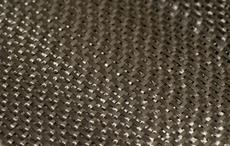
The recycled material is produced from disposed PET bottles, which can be fed back into the production cycle in the form of granulate. "The recycled PET we use is an equivalent substitute for the original PET yarn. It has the same high quality and the same properties," says Schröer.
This was the prerequisite for the product launch of the eco version in order to be able to cover the full range of applications of the classic HaTelit C and at the same time offer a resource-saving alternative. Every kilogram of recycled PET yarn saves around 4.3 kg of CO2 emissions if conventional PET yarn is avoided. This corresponds to a car journey of 33 km (passenger car with emissions of 130 g equivalent CO2/km).
Huesker geotextiles are used worldwide in a wide variety of projects. These include earthworks and foundations engineering, roads and pavements construction, hydraulic engineering, environmental engineering and mining. They often carry enormous loads, are exposed to heavy stress and must perform to high standards in their fields of application, such as slope protection, sealing for groundwater protection, flood protection or reinforcement in road construction.
"We test our products very carefully. They are only made available to the market when all the necessary evidence has been provided and they meet our high requirements. As is the case with the recycled PET yarns we use," Schröer points out. "HaTelit C eco is the first step. We are aware of our responsibility and will continue our ecoLine with further products in the near future," says Schröer. (SV)
Fibre2Fashion News Desk – India

